When someone mentions cooking on an open fire, my alarm lights immediately turn on and the first thing that comes to my mind is "Fire in nature = risk".
Then I think of all the dangers that fire can do to that same nature.
Galenkp gave us several fantastic topics for this week's #weekend-engagement, and since I have several pictures of food preparation on an open fire, I decided on the topic:
Have you ever cooked on an open fire? If yes, what do you like about it, do you have any tricks or tips to share and have you had any disasters?
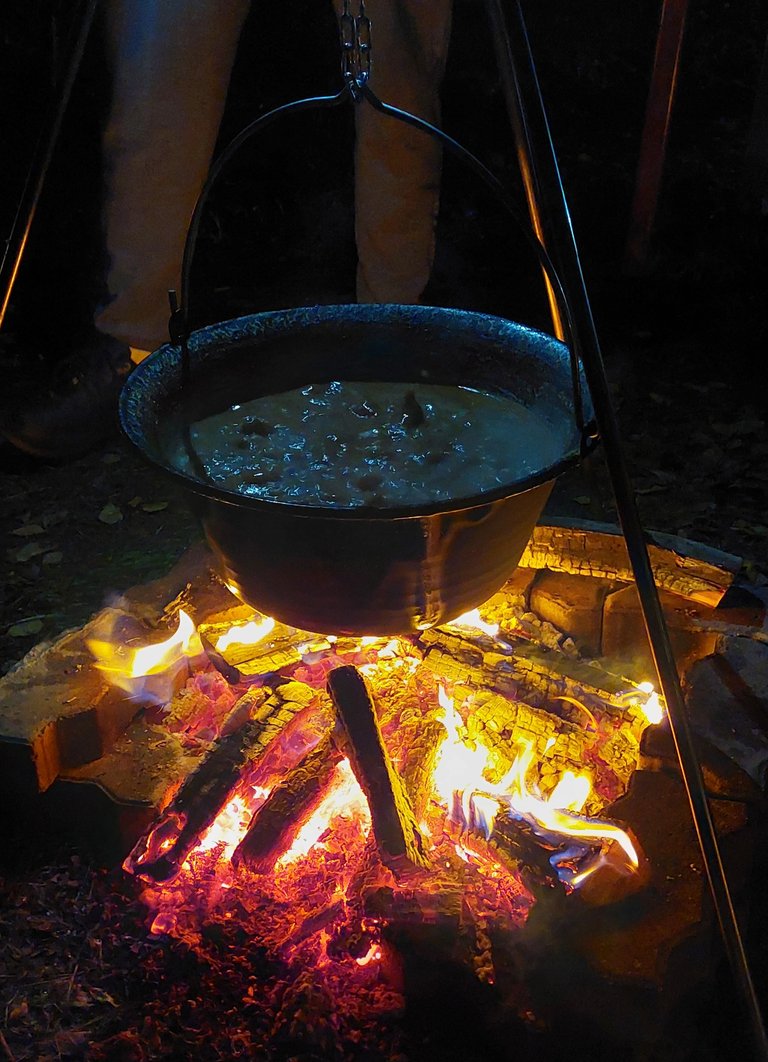
Finding space in a wide area, away from forest vegetation and trees, on a solid base, is the first step to successfully lighting a fire in nature, under the open sky.
The next thing that is needed is for the weather to be nice, without rain and without wind. If it is raining, it is difficult for the fire to sustain itself, and if the wind blows, sparks from the fire are a risk for the environment, especially if it is the summer period when everything is dry and easily flammable.
When preparing food on the fire, I like crackling the most wood and the smell of smoke.
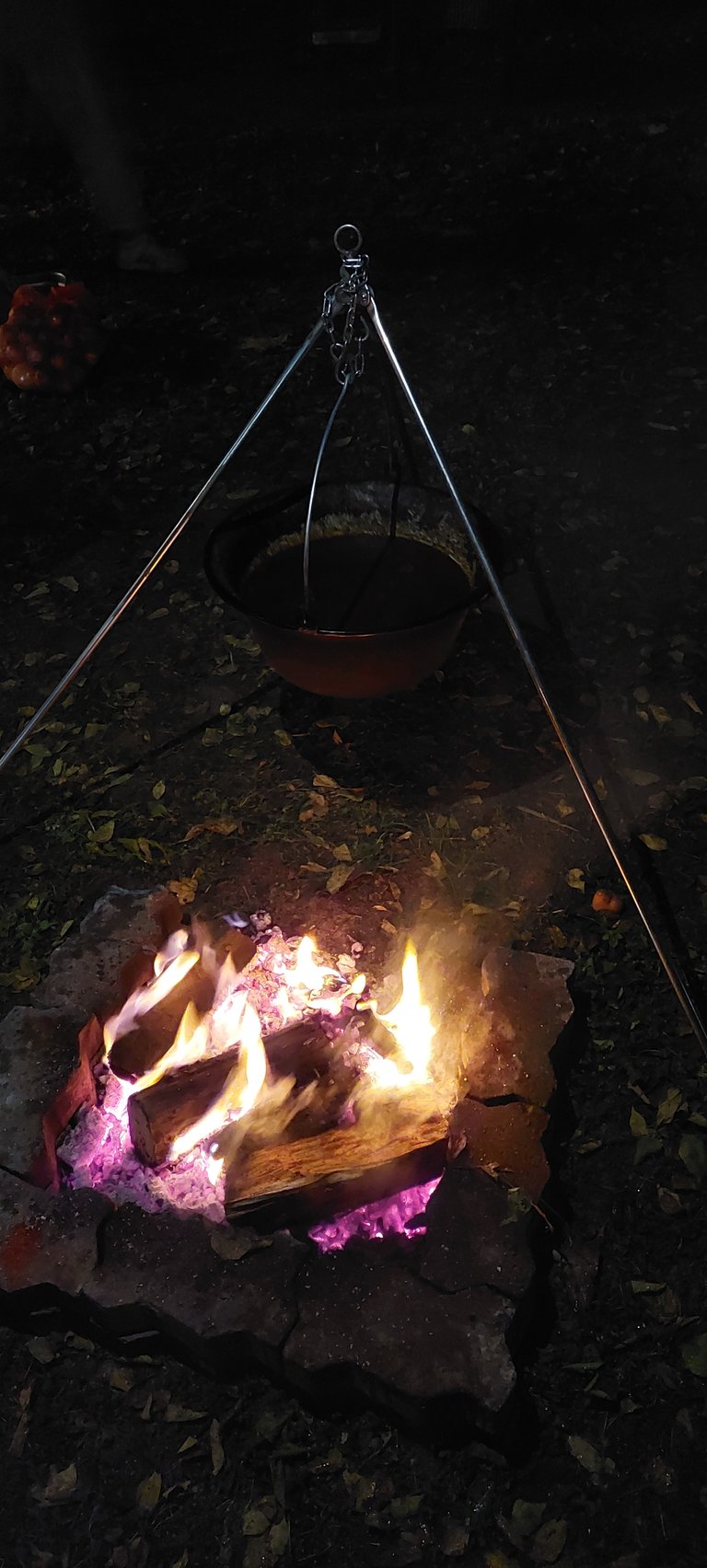
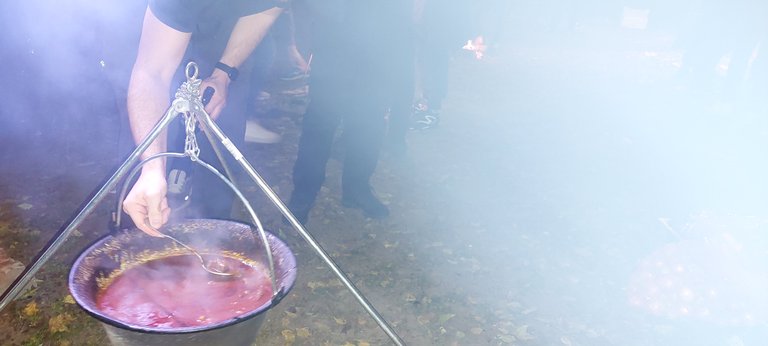
If we prepare food on clear, cold days, then we can warm our hands on the fire.
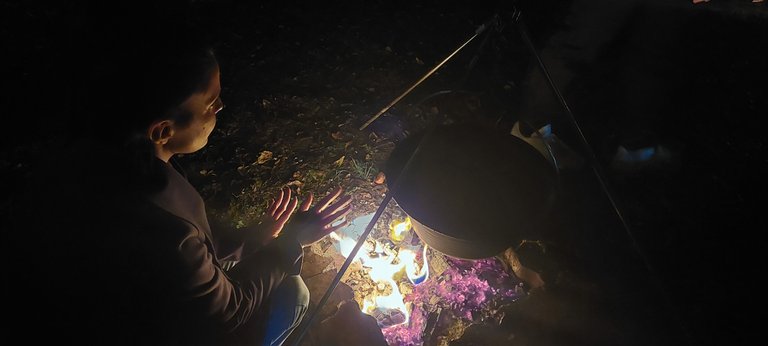
Preparing the ground for lighting a fire is very important.
Apart from the fact that you need to get far enough away from the vegetation, you need to fence off the area where the fire will be lit with stones.
When the wood is arranged, place the three-pronged support for the kettle in which we prepare food.
Most often, we prepare goulash or various soupy dishes (fish broth or beans) in a kettle.

In addition to all the necessary ingredients needed for the preparation of the dish, it is necessary to have enough beer in stock, with which, while we stir the dish in the cauldron, we wash the smell of smoke from our throats.

These pictures are from a get-together, when we made several cauldrons of stew, for that reason we lit several fires, but as we prepared the area properly, surrounded the fire with stones, we did not have any accidents.
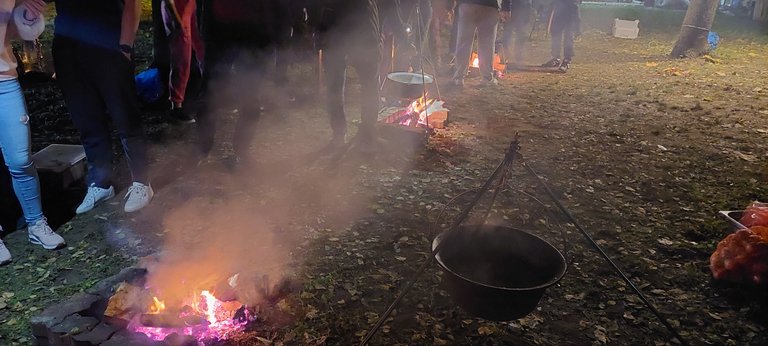
We made many dishes in the kettle, and I remember the most unsuccessful experience from more than 20 years ago.
Eight of us friends agreed to go fishing on a nearby river, where we planned to prepare fish soup from the fish we catch.
I also put a small bag of potatoes in the car next to the package with beer cans, and my friends looked at me with amazement and asked themselves: "What does he need those potatoes for?".
Before dawn, we packed into the cars our fishing equipment, kettle and all the necessary equipment for the kettle, wood with which we will start the fire, vegetables and spices for the stew, water for cooking, and I already mentioned beer and potatoes.
No one thought that we would also need fish to cook.
We're going to catch her, aren't we?
We arrived at the river bank, prepared the cars, prepared the rods, cast the hooks. They fenced off the area for the fire and lit it. We needed a fire unrelated to the preparation of the kettle, to warm ourselves up a bit and not have a little more light before dawn.
I used the formed embers in which I put the potatoes, to roast them slowly.
The friend in charge of cooking prepared the kettle, chopped all the vegetables and put all the spices in the water. All that was left was to add the fish to the cooking water.
The one we catch.
But...
That day the fish did not react to our baits. Only one friend caught one frog on his bait, which he freed from the hook with great difficulty.
After a few hours of unsuccessful fishing, we gave up on the plan.
The equipment for food preparation was packed into the car, the fire stayed burning until it went out on its own, and we gathered around the fire that was dying, peeled the skin off the baked potatoes, and joked with beer about our account and plan for cooking fish soup.
That is also the reason why I stated that all the ingredients are necessary for successful food preparation. So that, like us, you don't trust what you catch, catch or find in nature...
Sending you an Ecency curation vote!